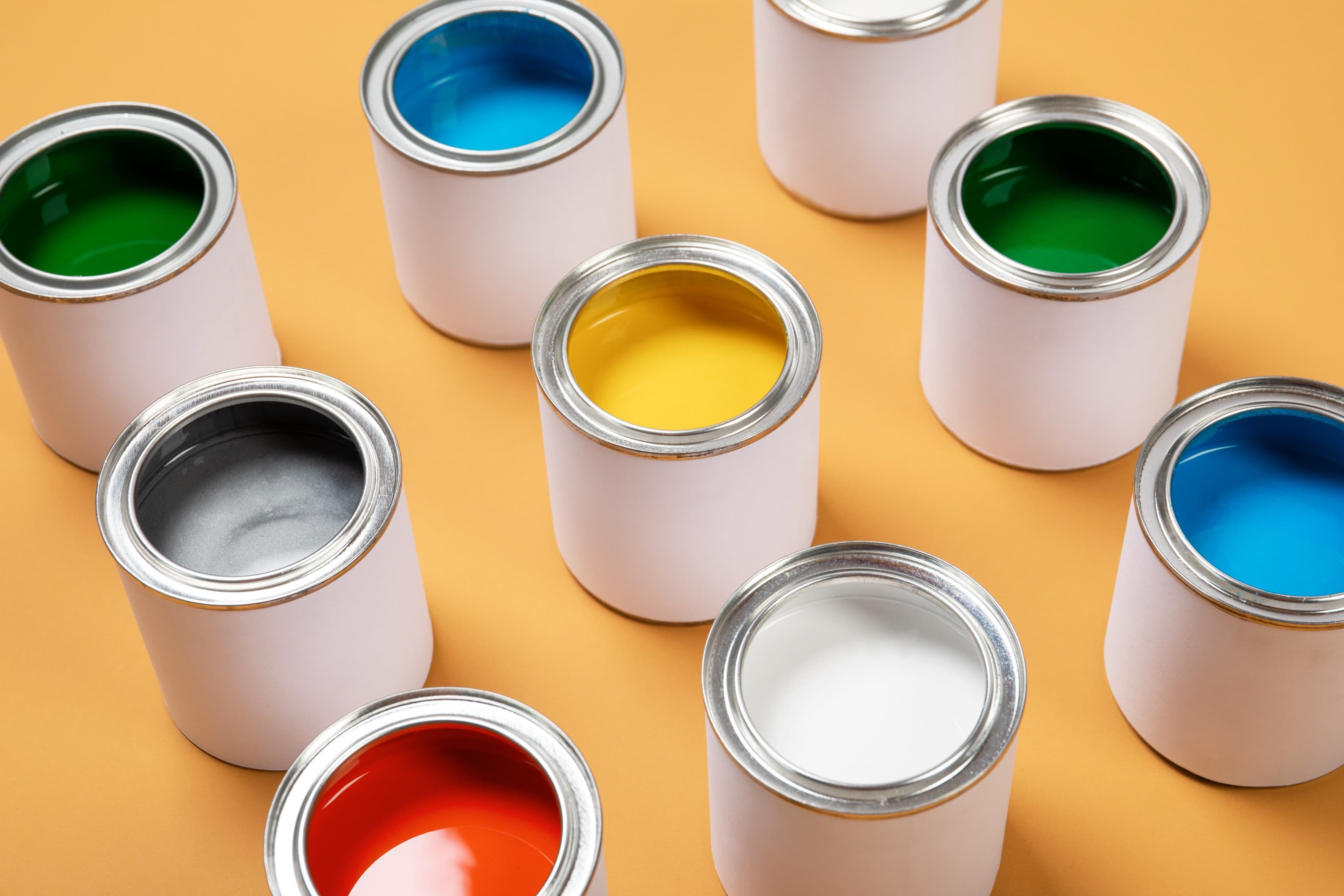
05/07/2024
Circular Economy and the Potential of Recycling Steel Cans
By Marjourie Corrêa and Arlene Carvalho, from the Circular Movement
Steel cans are used to store various products, such as food, beverages, hygiene and cleaning products, as well as chemicals like paint, which are essential in renovations, constructions, and the automotive industry. When we talk about these steel cans, the keyword is recycling. From the beginning of their lifecycle, these cans demonstrate their potential, as they are 100% recyclable and can be reintegrated into the production cycle multiple times.
The Associação Brasileira de Embalagem de Aço - Abeaço (Brazilian Association of Steel Packaging) states that steel is the most recyclable and recycled material in the world, with over 385 million tons recycled annually. In Brazil, approximately 200 thousand tons of post-consumer steel cans are recycled each year, in addition to more than 9 million tons of post-consumer steel transformed into new products. In Europe, countries like Germany and Belgium recycle more than 90% of all steel cans, while in Brazil this rate is around 50%.
"Steel cans can become anything else produced with steel, including new cans! They can be recycled multiple times without losing the original characteristics of the material, allowing the production of new items with similar quality. From this recycled steel, various items can be made, such as doors, window grilles, and other steel items. For the steel industry, for example, these cans are a valuable resource," points out Edson Grandisoli, ambassador and educational coordinator of the Circular Movement.
Abeaço's executive president, Thais Fagury, highlights that keeping steel within the reverse logistics chain is essential. “Since 2008, Abeaço has evaluated steel can recycling systems in leading countries like Germany, Belgium, Switzerland, and Sweden, as well as national systems. Based on these references, the ProLata Recycling program was created. This program, managed by the nonprofit association of the same name, aims at the reverse logistics of post-consumer steel cans and their revaluation through recycling.”
![]()
Image: Thiago Egg/Circular Movement
Recycle, yes. Reuse, no?
After the product's use, such as with paint, for example, many people simply discard them in regular trash, while others reuse them, transforming them into various items like plant pots, lamps, toys, art pieces, and pencil holders. Some even use them to store water or food, depending on the situation. But is it safe to reuse these cans in daily life, reducing the amount of waste generated without posing risks to health and the environment?
According to specialists, caution is needed, especially with paint cans. This is explained by Cindy Moreira, manager of the Brazilian Association of Paint Manufacturers (Abrafati). "We do not recommend the reuse of empty paint cans for any other purpose. This is due to potential problems that may be caused by the product's contact with the skin or ingestion, even in small amounts. This recommendation is even more emphatic in cases of food and beverage storage or planting of plant species."
Abeaço's executive president points out that one of the main risks is related to the storage of water or food by low-income populations. "The practice can be dangerous, especially in regions where the supply of potable water is scarce, as paint residues can contaminate water and food, posing a risk to an entire population," she points out.
In 2023, according to Abrafati, Brazil produced 1.871 billion liters of paint for various purposes. However, there is no specific data on how much of this paint is water-based and how much is solvent-based. But for the CEO of Yattó, a Circular Economy and Reverse Logistics company, Alexandre Galana, "the market has advanced in the production of water-based paints, although there are still many solvent-based materials. Proper disposal is crucial to prevent soil contamination and ensure the valorization of that packaging." Water-based paints are less toxic and emit fewer volatile organic compounds (VOCs), resulting in less environmental impact and fewer health risks.
![]()
Steel cans can be turned into anything else made from steel, including new cans! Image: Reproduction/Freepik
How to properly dispose of paint cans?
To ensure the proper and safe recycling of paint cans, specialists recommend leaving the can in a ventilated area for the remaining paint to dry completely. "If the can still has paint, you can remove the lid and let it dry naturally in a ventilated area for two to four hours. If the can is completely empty, just discard it normally with other recyclables," explains the ambassador and pedagogical coordinator of the Circular Movement.
Programs like ProLata Recycling, from Abeaço itself, installed in paint stores and other high-traffic points, facilitate the return of cans to the recycling cycle. The empty can should be discarded with other recyclables, and if your municipality has selective collection services that accept paint containers, even better. Use voluntary drop-off points or legalized collector cooperatives to dispose of your paint cans.
Another example of these programs is the partnership between Yattó and Suvinil, which provides all the necessary infrastructure for stores that sell paints and their containers to implement these drop-off points, receiving waste from all market consumers who use paints, not just those who frequent the store. With the can ready to be delivered, there are several options to route it to those who will make it usable again.
"The program provides all the on-site storage infrastructure, as well as communication materials for store owners to inform their consumers that the location is now a drop-off point for paint containers. Training is also offered to ensure this approach is effective. Suvinil provides digital communication materials to position the store online. Collection is done, the material is sorted, and proper disposal is given both to the containers and paint residues. This entire process is tracked and verified, ensuring proper disposal for both the Suvinil brand and the store owner contributing to a reverse logistics and circularity chain," explains the CEO of Yattó.
This partnership is an example of how integrating different actors in the recycling process can strengthen the Circular Economy, ensuring that steel containers are recycled efficiently and safely.
![]()
Image: Thiago Egg/Circular Movement
Innovation from education: Paint Bank full steam ahead!
Winner of the 2023 Circular Challenge, promoted by the Circular Movement, the Paint Bank, a project carried out by the Faculty of Technology (Fatec) of Jundiaí, São Paulo, deals not with steel cans but with excess water-based paints. And they are already operational! "Recently, we received paints at the Fatec Jundiaí Paint Bank, and although the quantity is still small, we are negotiating with a paint company to promote the project and become a collection point, in addition to a paint can manufacturer who showed interest," says Professor Ana Carolina Veredas, the project mentor.
The initiative also carried out a painting action with donations at the Jundiaí Elderly Home and participated in the Logistics Congress at Fatec Jundiaí, with a stand to receive donations. Created in the city, the Paint Bank connects donors of unused commercial paints with people who need them, avoiding improper disposal and helping families in vulnerable social situations. The community can participate by donating paints and informing their needs through a website or app. For now, donations can be delivered at Fatec Jundiaí.
Disseminating information about the recycling and proper disposal of steel cans, especially those used for paints, is essential to promote circularity. By highlighting the importance of recycling and emphasizing initiatives like the ProLata program and partnerships between companies, communities, and educational institutions, we can strengthen the Circular Economy and contribute to a cleaner and healthier future. How about joining this movement and helping promote the Circular Economy?
![]()
With the donations, the Banco de Tintas carried out a painting action with donations at the Elderly Home and at Fatec of Jundiaí itself. Images: Reproduction/Banco de Tintas
About Circular Movement
Created in 2020, Circular Movement is a collaborative ecosystem committed to encouraging the transition from a linear to a circular economy. The idea that all resources can be reused and transformed is the motto of the Circular Economy, the basic concept of the movement. Circular Movement is an open initiative that promotes collaborative spaces with the aim of informing individuals and institutions that a waste-free future is possible through education and culture, the adoption of new behaviors, inclusion, and the development of new processes, products, and attitudes. The work is done in partnership with Dow, a chemical, plastics, and agricultural products company based in Michigan, USA. Circular Movement currently impacts 2 million people through its activations and content.
And you? Do you want to learn more about Circular Economy?
If you are interested in learning more about this topic, access Circular Academy, the first free Latin American course on Circular Economy aimed at the general public. Together, in partnership and collaboration, we can make a difference in building a more circular planet.


